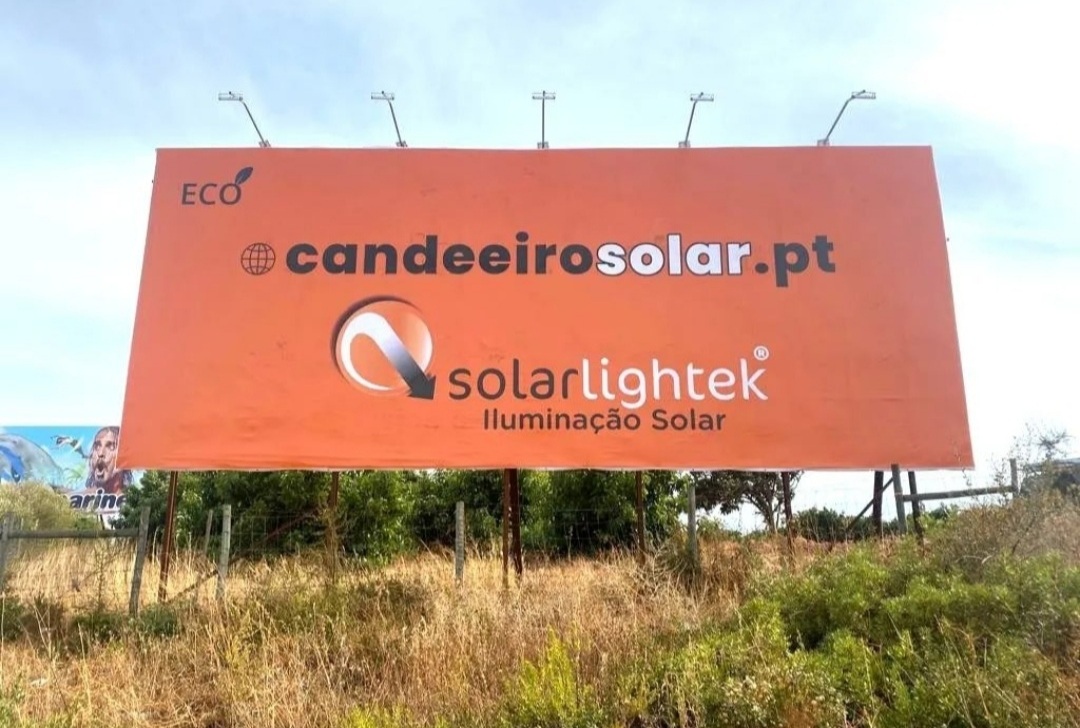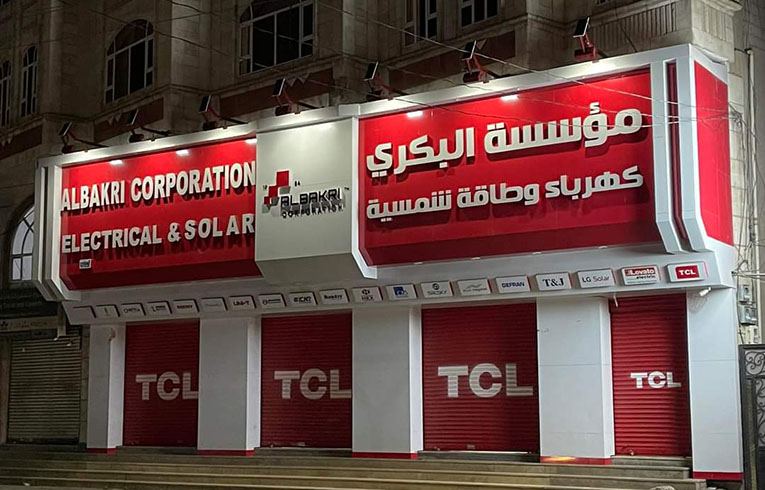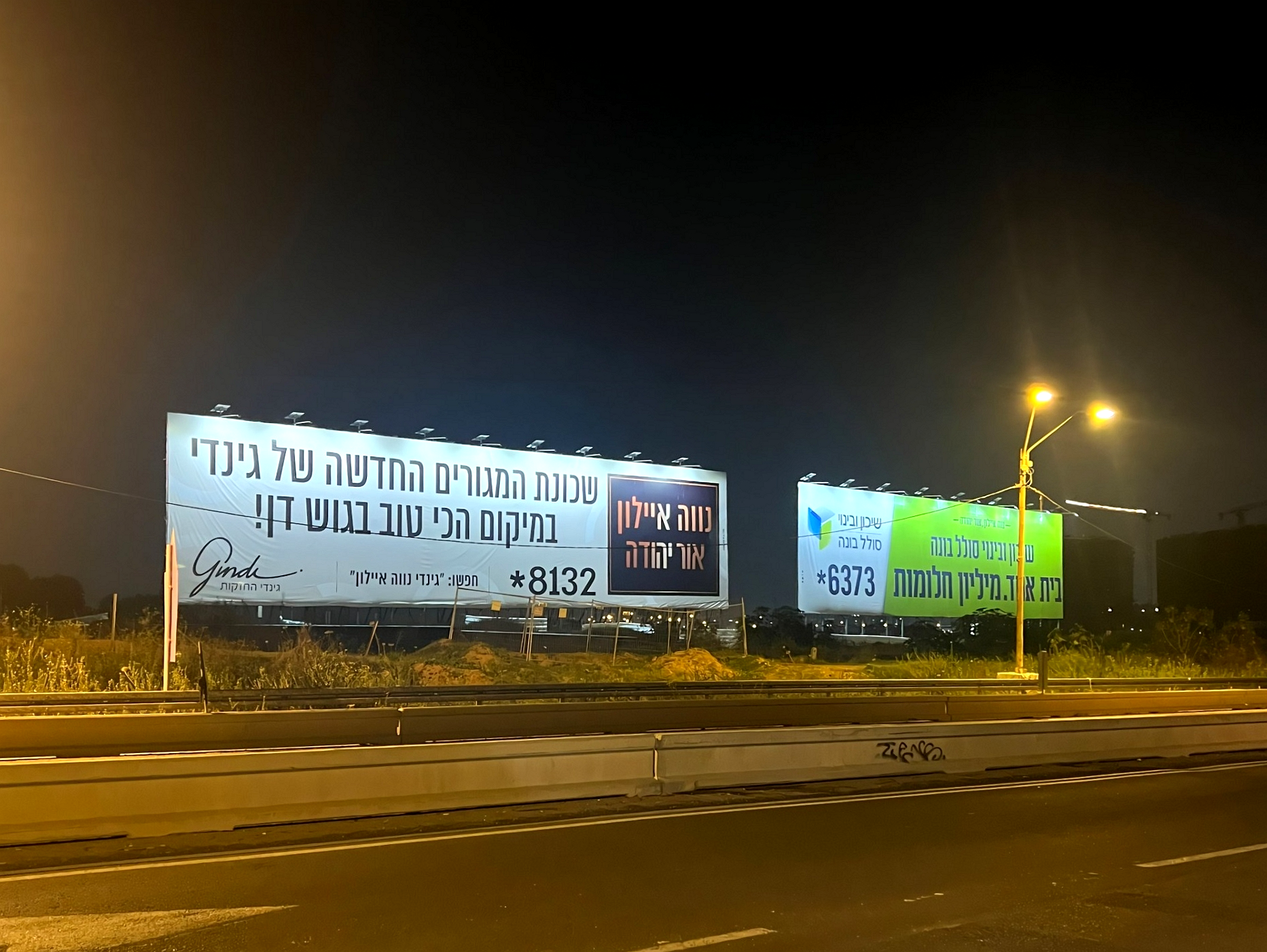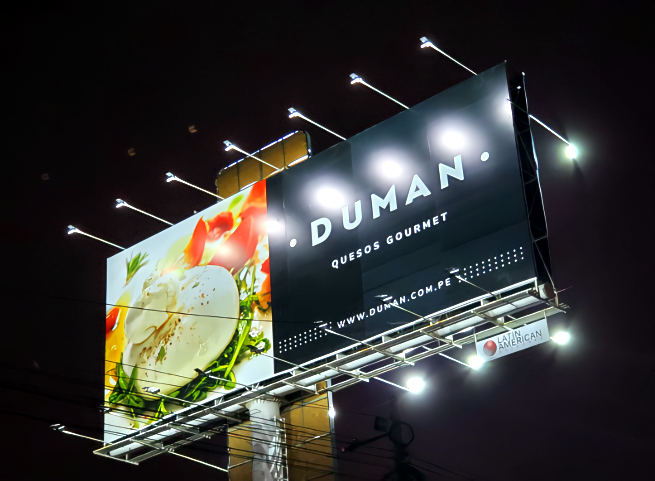Billboards are strategically placed in busy traffic areas with the aim of capturing the attention of pedestrians and drivers. Once pedestrians or drivers notice and read the advertisements on billboards, the investment is considered worthwhile. Good lighting not only enhances the visibility of the advertisement but also ensures its effectiveness during the night. However, lighting is not just for grabbing attention; it is also crucial for safety. In this guide, we will delve into the key aspects of billboard lighting.

Classification of Billboards: Traditional vs. Digital
In major urban thoroughfares and highways, a variety of billboards can be seen, conveying information to drivers and pedestrians in different formats and lighting methods. In the field of billboards, there are two main categories: traditional billboards and digital billboards. In the next section, we will examine their characteristics and lighting methods in detail.
- raditional Billboards
Traditional billboards use conventional printing techniques to imprint text and/or images on paper or vinyl, which is then pasted onto the exterior of buildings or sign surfaces. Due to sufficient daylight, these types of billboards are easily readable during the day, and the information is readily discernible. However, during the night, external light sources are needed to illuminate the billboard for pedestrians to read the information. Typically, high-power LED floodlights are installed at the top and/or bottom of the billboard to provide ample illumination. This design ensures visibility of the billboard at night.
- Digital Billboards
Digital billboards utilize advanced computer technology to change digital images every few seconds. Unlike traditional billboards, digital billboards are self-illuminating, with light emanating from the interior of the billboard. This unique design allows digital billboards to dim during the day to increase visibility and brightness at night. However, the high brightness of digital billboards during the night may cause glare issues, affecting driver visibility and comfort.
- Small Classification Billboards
Apart from traditional and digital billboards, there are also small classification billboards such as multifunctional billboards. These signage structures integrate different purposes, such as telecommunication antennas or public lighting brackets. Despite varying structures, lighting is still provided by external LED sources, similar to the design of traditional billboards.
Requirements for Billboard Lighting: The Key to Proper Illumination
Proper illumination of billboards is crucial to ensuring the effectiveness of advertisements. During the day, ample light makes the information on the billboard easy to read. However, at night, external light sources are necessary to illuminate the billboard, ensuring that pedestrians and drivers can focus on the information displayed. In lighting design, it is essential not only to meet illuminance requirements but also to prevent issues like excessive brightness and glare, addressing lighting pollution.
By adhering to the recommendations of the IES Lighting Handbook 9th Edition and practical considerations, standard three-level classifications for billboard lighting have been established to meet the requirements of different environments and materials.
| Billboard Lighting | Billboard Surface | Background | Lux Requirement |
|---|---|---|---|
| Scenario 1 | Dark | Bright | 1000 Lux |
| Scenario 2 | Bright | Bright | 500 Lux |
| Scenario 3 | Dark | Dark | 500 Lux |
| Scenario 4 | Bright | Dark | 250 Lux |
Specific lighting restrictions have been formulated and implemented to protect the normal lives of residents in residential areas. The detailed regulations for window billboard lighting in residential communities are as follows:
- Before 23:00, the vertical illuminance of windows in residential areas is limited to 10 Lux: Outdoor billboard lighting is restricted to not exceed 10 Lux before 23:00. The purpose is to ensure that the light from billboards does not have a significantly noticeable impact on residential windows late at night, maintaining the normality of residents’ lives.
- After 23:00, the vertical illuminance of residential windows is limited to 5 Lux: After 23:00, the illuminance requirements for outdoor billboards become more stringent, limited to not exceeding 5 Lux. This is to reduce the intensity of billboard lighting late at night and minimize potential disturbances to surrounding residential area residents.
- Automatic Lighting Control and Prohibited Periods at Night: At night, the lighting of outdoor billboards needs to be automatically controlled to ensure moderate illuminance during specified periods. Among them, outdoor billboard lighting is prohibited from turning on lighting fixtures from 00:00 to 05:00 daily. This is intended to minimize light pollution late at night and maintain the tranquility of residential areas.

Recommended Guidelines for Billboard Lighting Design:
When designing billboard lighting, many factors need to be considered to ensure good lighting effects while complying with relevant standards and regulations. Here are some recommendations for billboard lighting:
- Illuminance Requirements: The recommended illuminance level is typically between 250 Lux and 1,000 Lux, adjustable based on the specific requirements of the billboard.
- Uniformity: The uniformity of billboard lighting should be maintained at 4.0 or lower to ensure even illumination across the entire surface.
- CRI (Color Rendering Index): The color rendering index of lighting fixtures should be higher than 80 to ensure that advertisement content is accurately reproduced, making it more attractive.
- Lighting Time: Commercial billboards should not be illuminated before or after business hours to comply with regulations.
- Other Considerations: Billboards within a 300-foot radius should not be illuminated, and light sources should not directly shine on drivers or pedestrians.
By adhering to these guidelines and utilizing SRESKY Solar Floodlights, an ideal solution is provided. Its intelligent dimming technology ensures sufficient illumination when needed, reducing illumination during other times to ensure visibility without being overly glaring. This design balances the attractiveness of the billboard with the safety needs of pedestrians and drivers.
Types of Billboards:
- Small Billboards (Height and Width Less Than 8 Meters):
- Fixtures can be installed on one side, with a distance between fixtures of approximately 1 to 2 meters.
- Suitable for wide beam angle lighting, it is recommended to install fixtures above the billboard to avoid darkening the sky.
- Medium Billboards (Height 8 to 12 Meters):
- Bidirectional lighting is suitable for wide beam angle fixtures.
- The distance between fixtures should be between 1.5 to 2.6 meters.
- Narrow Billboards:
- Suitable for narrow or medium beam angle fixtures.
- Fixture placement depends on the height of the billboard, with fixtures preferably installed on both sides.

Advantages of SRESKY Solar Floodlights for Billboard Lighting:
- Convenient Installation: SRESKY floodlights are designed specifically for billboard lighting and are easy to install. Users can easily install the fixtures, quickly meeting the lighting needs of billboards.
- Adjustable Beam Angles: SRESKY floodlights offer a choice of different beam angles, making them suitable for various sizes and shapes of billboards. Adjustable beam angles mean users can tailor the direction of illumination according to the specific requirements of the billboard, ensuring precise and uniform illumination.
- Lens Designed for Billboards and Floodlighting: SRESKY floodlights are equipped with professionally designed lenses to meet the lighting needs of billboards and other outdoor applications. This includes roads, perimeters, yards, sports areas (such as tennis courts), and small soccer fields, making it a versatile outdoor lighting solution.
